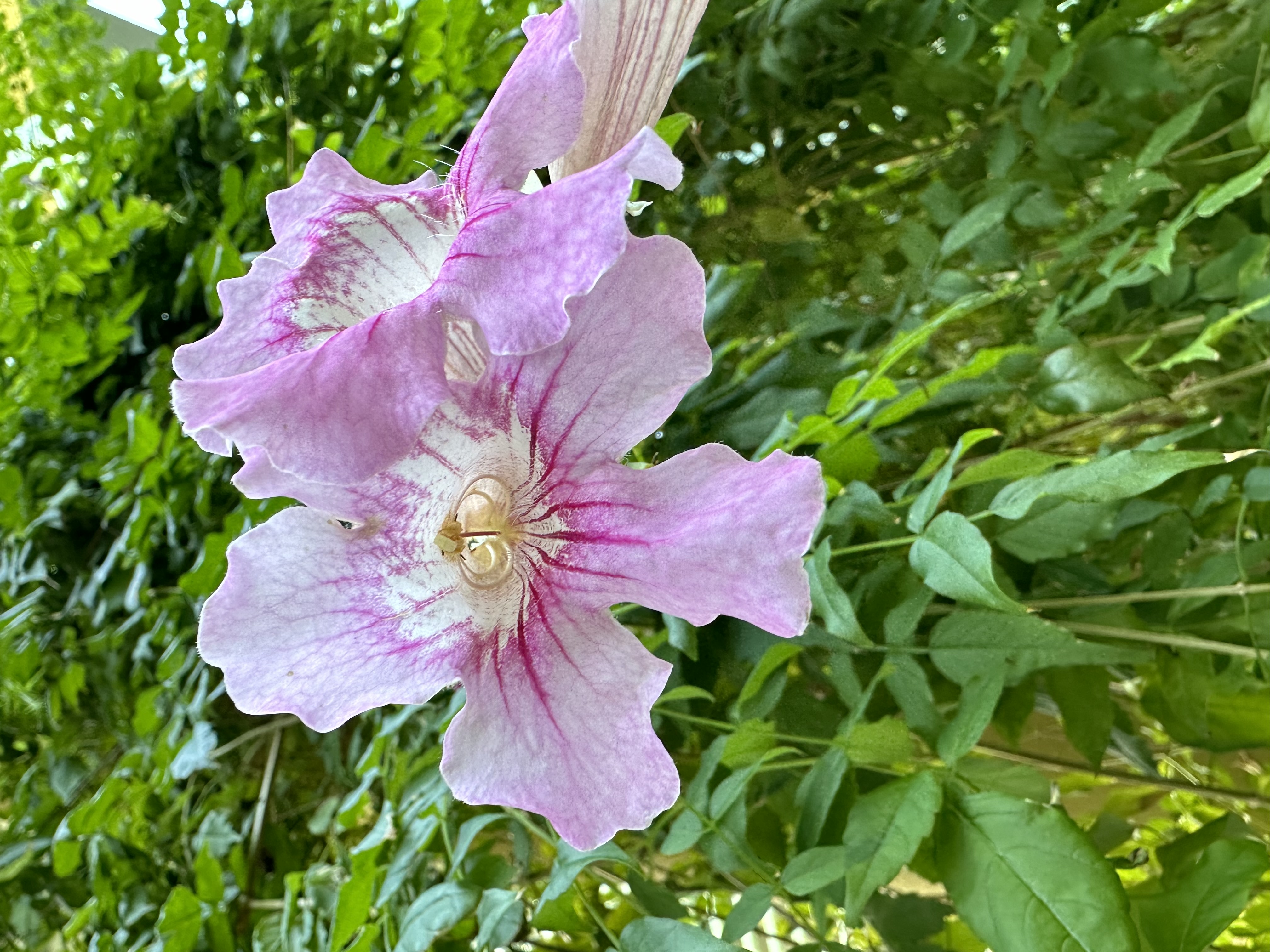
World Happiness Day is 20 March and while it is not designated as a day where everyone needs to walk around with beaming smiles — because, let’s face it, not everyone can be happy all the time — it is a friendly reminder that we all need happiness in our lives.
Being in and amongst plants brings a lot of people happiness. It makes us feel connected to Mother Earth — to hear rustling leaves, to snap a hint of flowery fragrance, to admire the intricacies of flower colour. There is so much to appreciate.
Although you won’t hear any jazz tunes coming from this exquisite beauty, the lavender trumpet vine is a handsome sight to behold this time of year. Blooming mostly in the late winter and spring months, this delightful vine — or liana — is currently dazzling on the columns of Gardenia Court in Camana Bay's Town Centre. Easily identifiable by its lavender-pink-white flowers, which are shaped like trumpets, Bignonia callistegioides is a classic Bignonia.
Bignonia, short for Bignoniaceae, are a moderately sized family of plants mostly native to South America. Many of the plants in this family are woody, pan tropical and often climbing. Bignonia callistegioides is no exception. Using tiny tendril appendages, this evergreen vine can become a fast grower once it finds a suitable home and a reliable water source.
Although it can handle full sun, it will appreciate a bit of shade to thrive, and a humus-rich, well-draining soil. Lavender trumpet vine is wonderfully fragrant and, when leaning in to sample the aroma, it is likely you will also notice how complexly beautiful the flowers really are. The lavender-white-pink can be a variety of intensities, and inside is a beautiful yellow throat that is balanced delicately with the deeply coloured veins that run down the trumpet.
These elegant and fragile flowers make such a nice contrast against the bold and glossy leaves of this plant and would make an exceptional specimen in a white garden, or used along a fence/trellis for privacy. It is a strong free climber, so it can be used as a solitary focal specimen akin to where it resides in Camana Bay.
This article was originally featured in the March 2024 print edition of Camana Bay Times.


